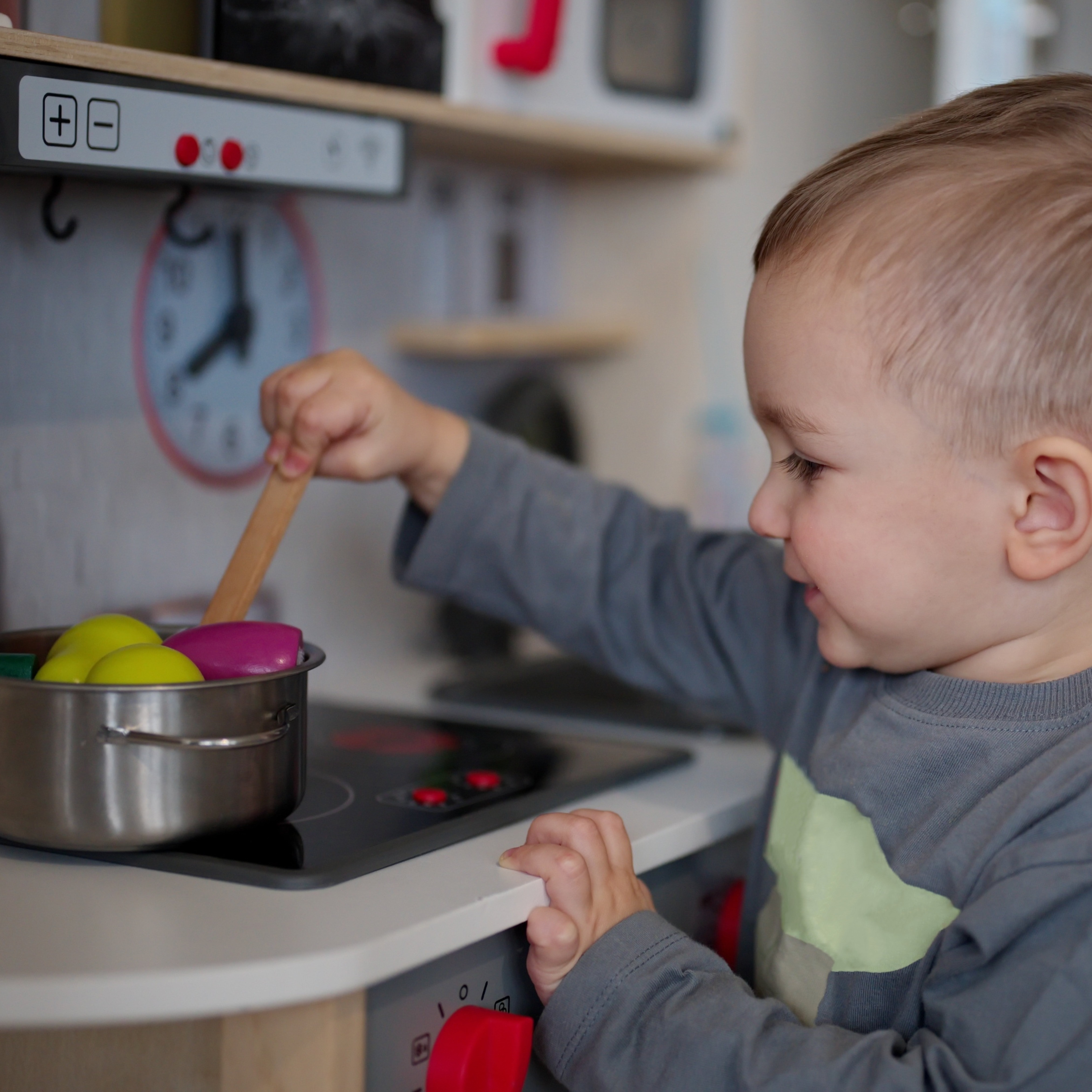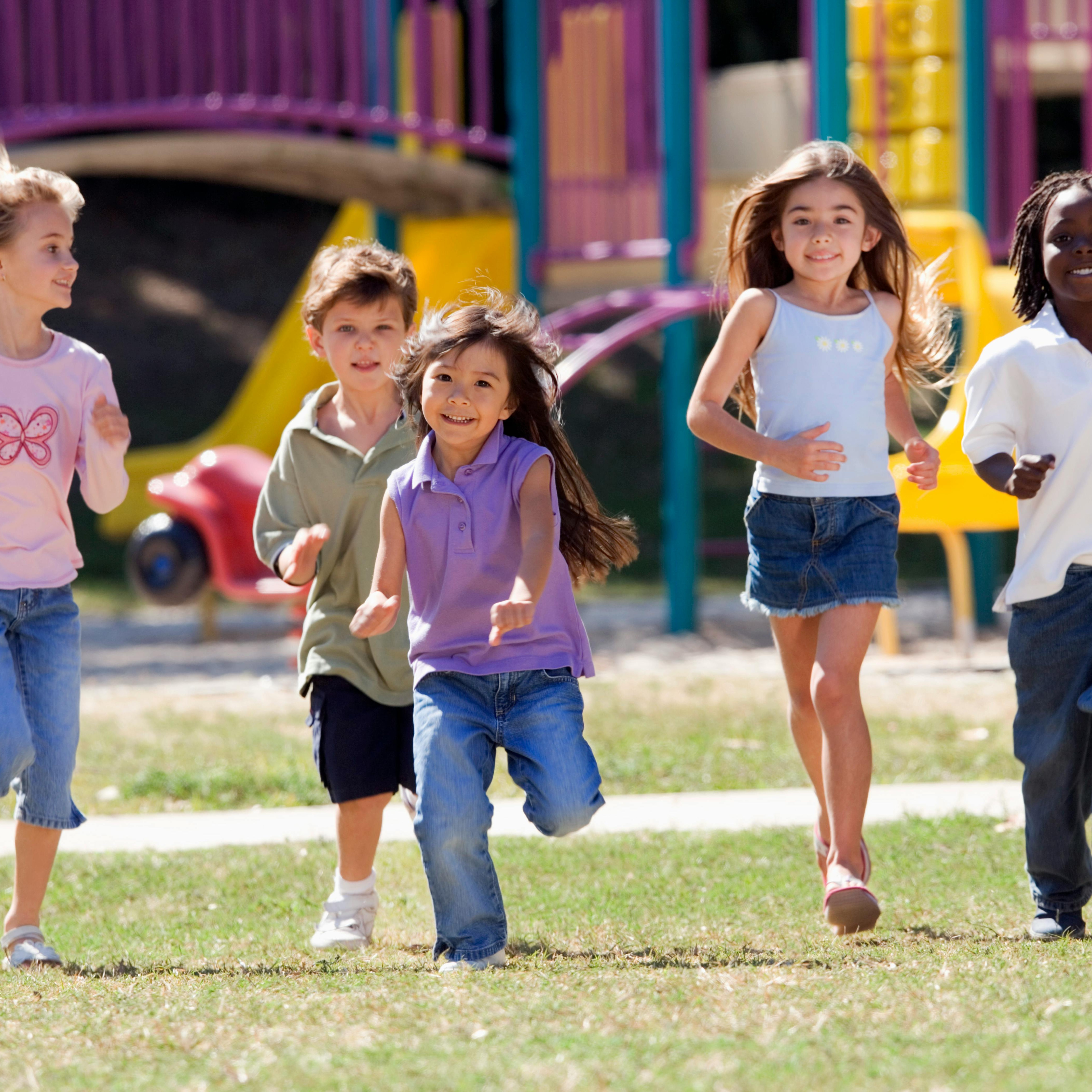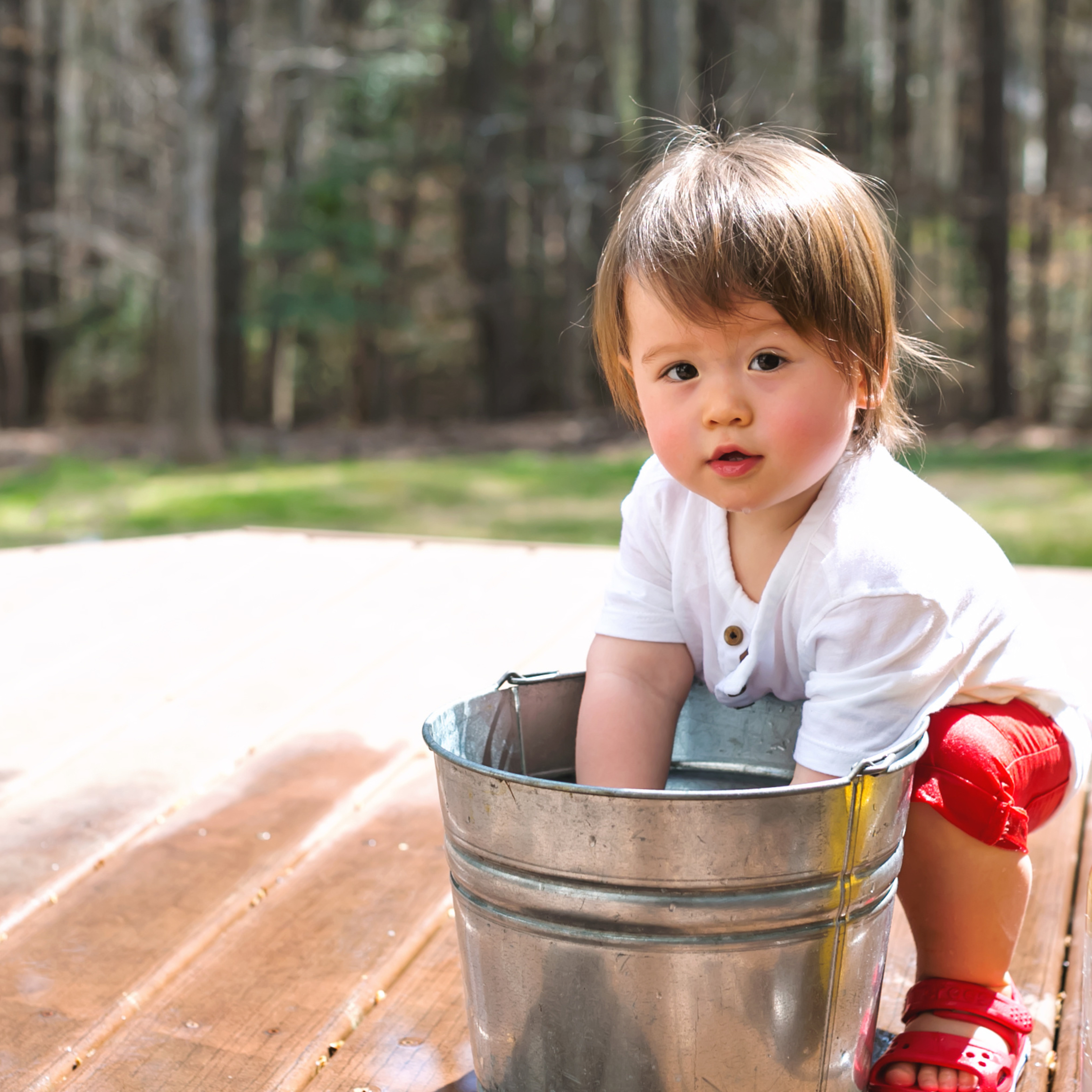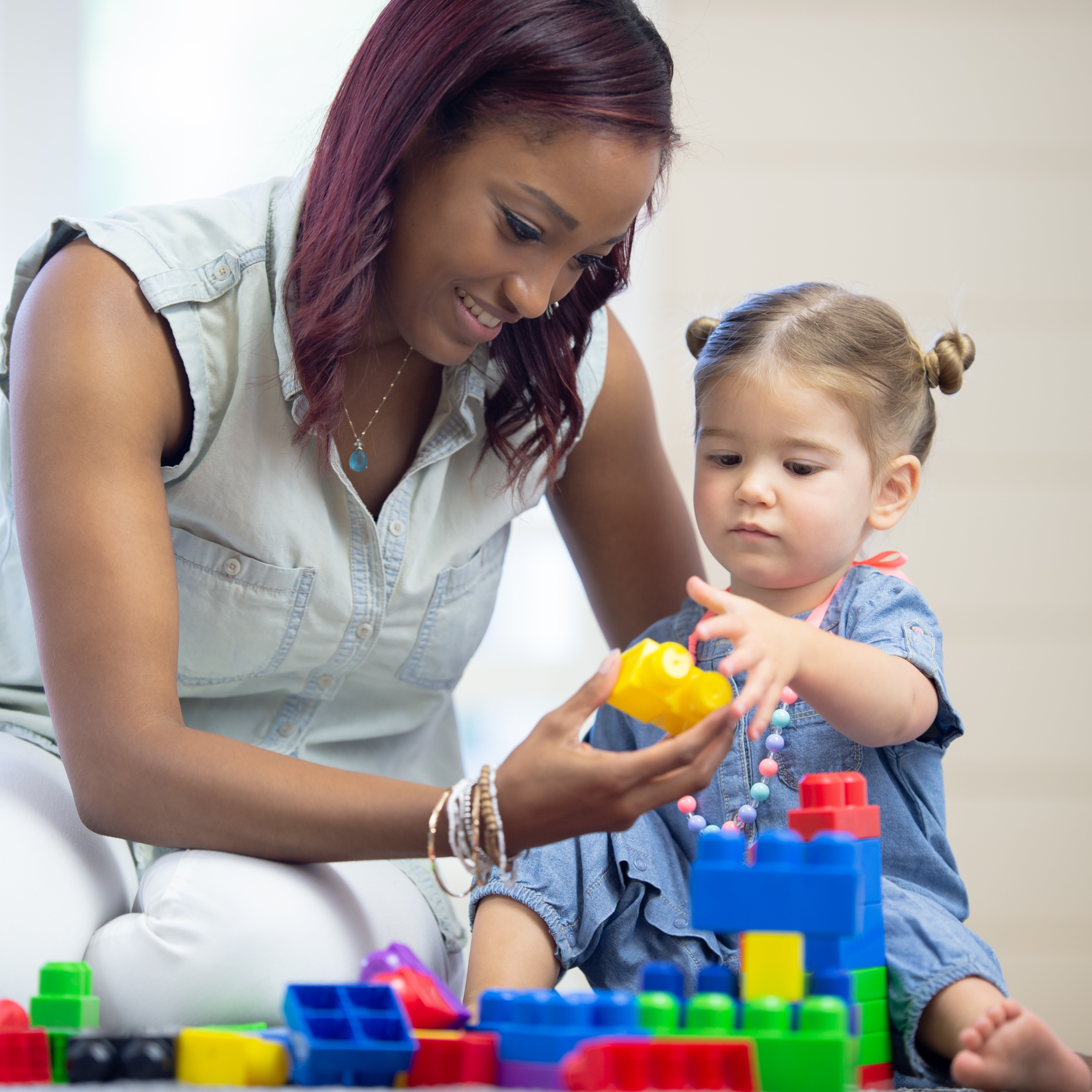· Beth & Michelle · Blog · 3 min read
My Toddler Uses Single Words… Now What?

Hearing your toddler begin to talk is such an exciting milestone. You’ve probably celebrated those first sweet words. But once your child is confidently using single words, you may find yourself wondering…
What comes next in their language development?
The answer? Two-word combinations!
Most toddlers begin using two-word combinations by 24 months. This is a big leap in development and it shows your child is beginning to understand grammar, word order, and how to connect words to communicate more clearly!
What Do Two-Word Phrases Sound Like?
At first, your toddler’s phrase will be short and to the point - and that’s perfect! You might hear things like:
- More milk
- Mommy go
- Big truck
- Doggy eat
- Sit chair
These simple word combinations may not seem like much, but they are HUGE in toddler terms! Instead of just labeling, your child is starting to express needs, describe things, and make requests.
If your toddler isn’t using two-word phrases yet - don’t worry! Every child develops at their own pace and there are many ways to support this growth at home.
5 Easy & Fun Ways to Help Toddlers Use Two-Word Phrases
Here are five strategies you can start using today — all speech pathologist-approved and designed to fit into your daily routine.
1. Model Two-Word Phrases During Everyday Activities
Use short, clear phrases during things you already do together.
Try this:
- During snack time: “Want banana?”
- During play: “Push car” or “Throw ball”
Why it works: Simple, repeated phrases help your toddler hear how words go together in real life.
2. Expand on What Your Child Says
If your toddler says one word, add another to turn it into a phrase. This is called expansion.
Example:
- Child: “Dog!”
- You: “Big dog!”
Why it works: You’re showing them exactly how to grow their language — without pressure.
3. Use Gestures with Words
Pair your words with actions or gestures.
Try this:
- Say “Go car” while pushing a toy car.
- Say “Pick up” while lifting your child.
Why it works: Gestures add visual support and help connect meaning to the words.
4. Sing Songs with Repeated Phrases
Songs are a fun way to teach two-word phrases without it feeling like work. Pause during predictable parts to let your child fill in a word.
Try these favorites:
- “Row, row, row your boat…”
- “The wheels on the ___ go round and round…”
Pro tip: Pause during predictable parts and let your child fill in a word!
5. Offer Two-Word Choices
Instead of asking yes/no questions, offer choices using two-word combinations.
Try this:
- “Blue cup or red cup?”
- “Car seat or stroller?” Why it works: Choices encourage your toddler to repeat or copy what you say!
Final Thoughts
If your toddler is using at least 50 single words and understands simple directions, they’re likely getting ready for two-word phrases. Just like walking or potty training, language development takes time, repetition, and a little encouragement from you!
If you’re concerned about your child’s language development, don’t hesitate to reach out to a speech and language pathologist. Early support can make a big difference.



